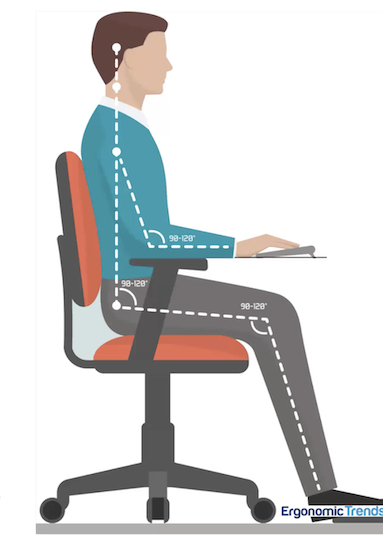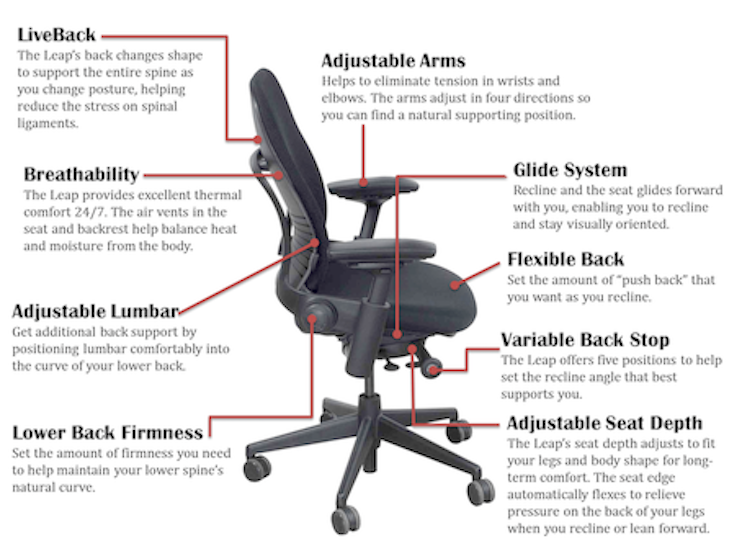Workplace Ergonomics Tips
Ergonomics is the process of designing or arranging workplaces, products and systems so that they fit the people who use them. Optimizing your office workstation setup enhances business performance and your comfort in the workplace.
Why is ergonomics so important?
Preventative. The body can be stressed by an awkward posture, or repeated movement and cause your musculoskeletal system to be affected. Your body may begin to have symptoms such as fatigue, discomfort, and pain, which can be the first signs of a musculoskeletal disorder.
Refer below for a quick set up process and items to be mindful of, when using a hot desk on campus. Feel free to also watch a full ergonomics presentation from our Workers Compensation provider, Chubb and check out the resources on the right for more guidelines and checklists.
Key Concepts for Proper Ergonomics & Wellness
- It's all about neutral posture, no straining: ears over shoulders over hips
- Listen to your body, there is not one ergo set up for everyone - standing all day may not be a full benefit. If your body is feeling discomfort, make the necessary adjustments.
- Breaks = Recovery: frequent breaks are important for your body, such as putting hands down in your lap or looking away from the monitor every 20 minutes for 20 seconds at something 20 feet away.
- Check out free app reminders, such as Simple Repeat Timer and Stand Up, as well as Chrome extension to remind you with eye exercises!
- Posture: small changes make a big difference!

Desk Set-Up Steps:
- Adjust the Chair
- Feet flat on the ground
- Seat height adjusted so the thighs are parallel to the floor
- Lumbar support adjacent to the small of the back
- Upper arms located by the worker's side
- Table Height
- Elbows at 90 degrees with wrists straight
- Forearms parallel to floor
- Keyboard/Mouse (provides wrist support)
- Keyboard at the same height as the elbows
- Mouse located next to the keyboard and at the same height
- Monitor Height
- Top of screen at eye level
- Monitor located approximately arm's length away from worker

Additional Standing Workstation Modifications:
- Alternate between sitting and standing, sit before discomfort occurs
- When standing, use an "at ease" posture to encourage movement
- Wear a shoe that offers good support
- Use a foot rest to reduce fatigue and increase stability
- Use an anti-fatigue mat to reduce standing discomfort
- Elbows at 90 degrees with wrists straight
- Upper arms located by the worker side
- Mouse located next to the keyboard and at the same height
- Keyboard at the same height as the elbows
- Top of screen at eye level
- Monitor located approximately arm's length away from worker
